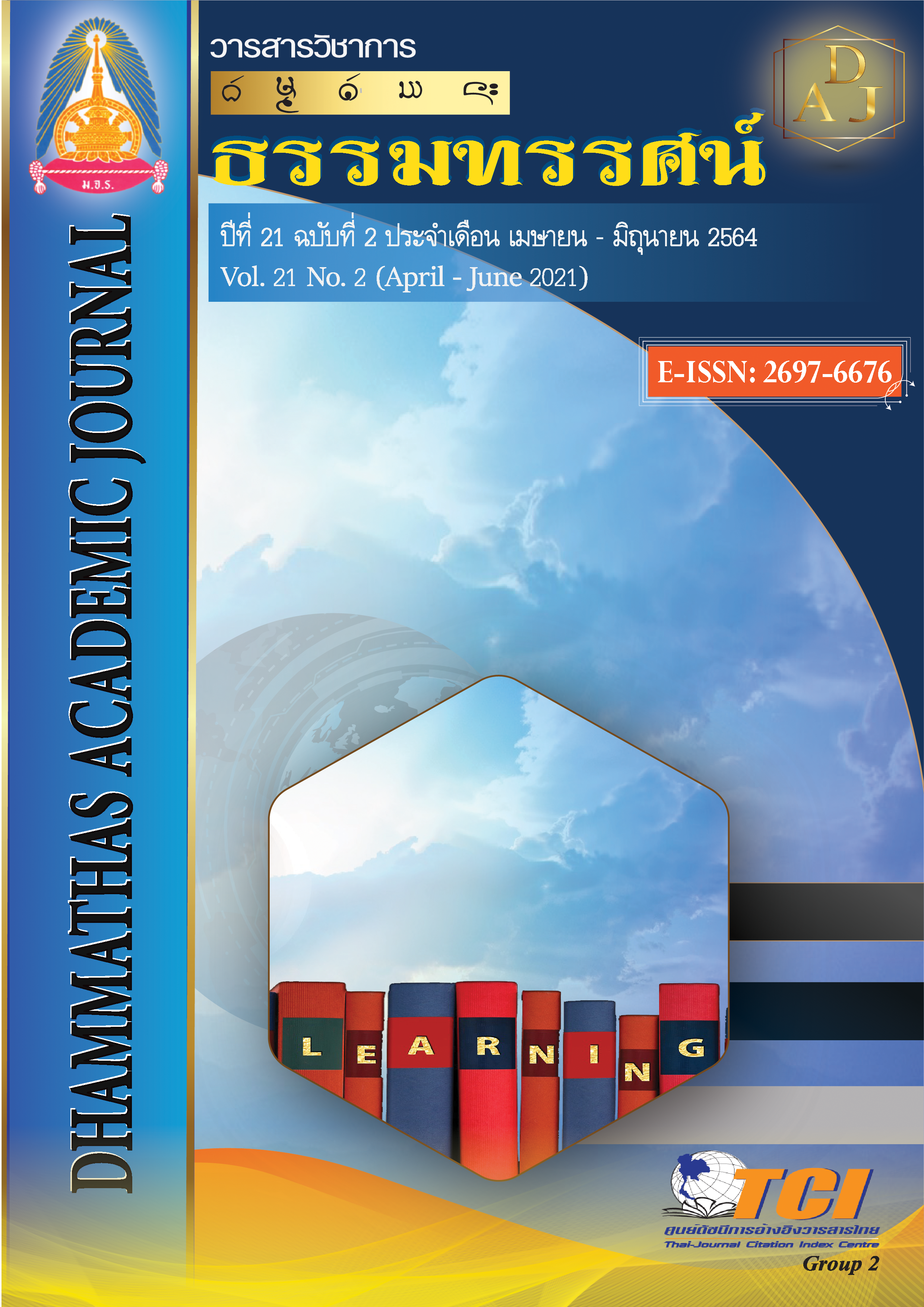A STUDY OF VIPASSANA MEDITATION PRACTICE IN SANVARA SUTTA
Main Article Content
Abstract
This article presents the Sanvara sutta is taught by the Buddha to the Bhikkhus by emphasizing on ‘sanvara (to close)’ of the six faculties (indriya): eyes, ears, nose, tongue, body and mind not to be activated by touching with image, flavor, odor, sound, touch and feeling and to be aware of defilement domination in the time of emotional reception through the six faculties. The delusion and pleasure in this matter are the cause of mental deterioration from the wholesome dhammas and of the rise of unwholesome dhammas leading to the attachment to sensual desires and hindrances. When the mental development for closing the senses (āyatana), the existence of wholesomeness is maintained. The important doctrine in the Sutta relates to the awareness of closing the internal and external senses to realize the advantages and disadvantages of the rising unwholesomeness if the mind of Bhikkhu does not attach to the image, flavor, odor, sound, touch and feeling rooted by the delusion (moha), anger (dosa) and greed (lobha). This dhamma is significantly beneficial to the insight meditation practice.
Article Details
References
ธนิต อยู่โพธิ์. (2547). วิปัสสนานิยม. (พิมพ์ครั้งที่ 7). กรุงเทพฯ: มหาจุฬาลงกรณราชวิทยาลัย.
พระพรหมคุณาภรณ์ (ป.อ.ปยุตฺโต). (2555). พุทธธรรม ฉบับปรับขยาย. (พิมพ์ครั้งที่ 3). กรุงเทพฯ: ผลิธัมม์.
พระพรหมคุณาภรณ์ (ป.อ.ปยุตฺโต). (2556). พจนานุกรมพุทธศาสน์ ฉบับประมวลศัพท์. (พิมพ์ครั้งที่ 19). กรุงเทพฯ: ธรรมสภา.
มหาจุฬาลงกรณราชวิทยาลัย. (2539). พระไตรปิฎกภาษาไทย ฉบับมหาจุฬาลงกรณราชวิทยาลัย. กรุงเทพฯ: มหาจุฬาลงกรณราชวิทยาลัย.
สมเด็จพระญาณสังวร สมเด็จพระสังฆราช สกลมหาสังฆปริณายก. (2557). สัมมาทิฏฐิ. (พิมพ์ครั้งที่ 2). นครปฐม: สาละพิมพ์การ.

